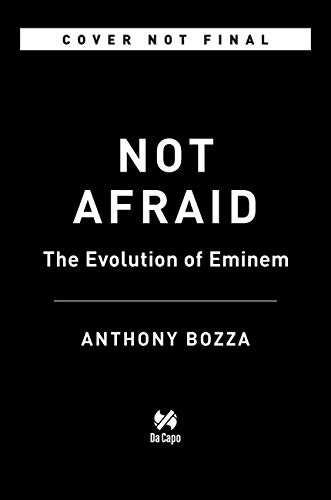What do you think?
Rate this book


320 pages, Kindle Edition
Published November 5, 2019

"As someone who knew Marshall Mathers way back when, who carefully chronicled his rise and most essential years and has ever since always watched his evolution, I found this moment to be significant. I saw the seeds of something that, to be honest, I’d almost written off. I never dismissed Marshall as an artist, but I had put him on pause. I’d listened carefully to every one of his records and was up to date on all his movements, but I’d noticed a shift in his work artistically that I understood but was not always riveted by. Over the course of the past fifteen years, since I wrote Whatever You Say I Am: The Life and Times of Eminem, Marshall went through ups and downs equally as traumatic as his childhood. He reaped the benefits of commercial and artistic success, but he also suffered greatly, losing his best friend; going through divorce, remarriage, and redivorce with Kim; and almost succumbing to his chemical demons.
Yet somehow, through downward spiral and rebirth, he carved out a niche that went beyond his skills as a lyricist and rapper. He created a sound whose origin story could be heard in his early work but that had come into its own. It was as emotional and confessional as early tracks like “If I Had” and “Rock Bottom,” but sleekly crafted and reimagined as shots aimed more for the charts than the heart. And they worked. They really did: “Love the Way You Lie,” “The Monster,” and “Not Afraid” all peaked at number one, as had Recovery, Marshall Mathers LP 2, Relapse, and Revival. All those albums and all those singles are great and equal to what had initially caught my ear. Personally, I’ve always been more engaged by the wise-ass rhymes in “Drug Ballad,” the blistering sing-song ferocity of “Kill You,” and the songwriting genius of “Stan.” That was Mr. I Just Don’t Give a Fuck, the word-obsessed rebel with an endless clip of rhymes to fire and nothing to lose."
"...His abuse reached its apex in 2007, when Mathers bought methadone from a dealer in an effort to curb the stomach problems that were beginning to plague him from consuming, by his account, up to thirty Vicodin and forty to sixty Valium per day. “My everyday regimen would be, wake up in the morning and take extra-strength Vicodin. I could never take more than one and a half because it tore up my stomach lining. So I’d take the one and a half and it’d kind of be Vico-din throughout the day. Then, as evening crept up, around 5:00 or 6:00, I’d start with a Valium or two, or three, or four. And every hour on the hour, I’d pop four or five more. The Ambien would put me over the top to go to sleep. Towards the end, I don’t think the shit ever put me to sleep for more than two hours . . . two, three times a night, I would get up and take more.”